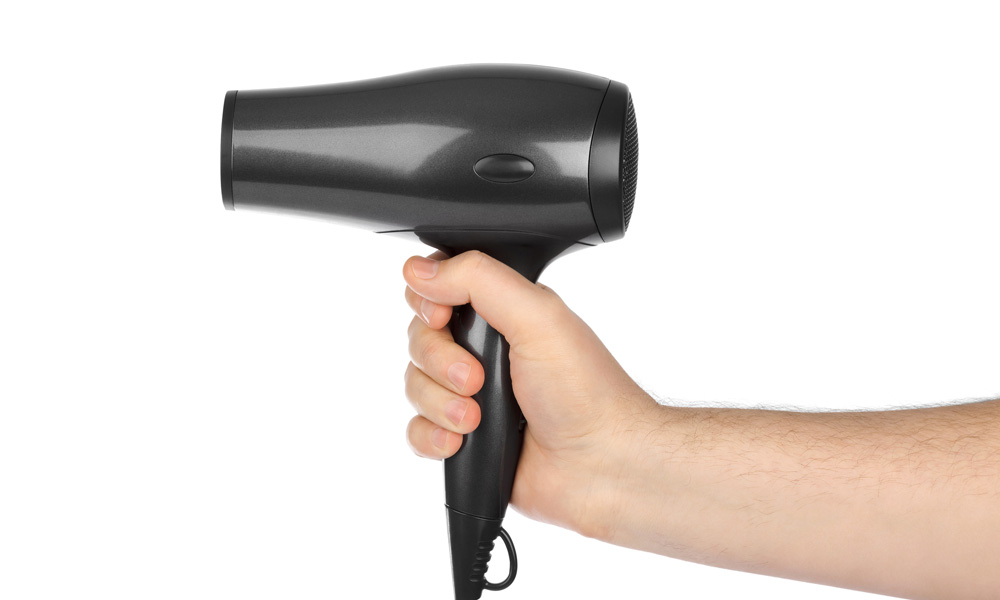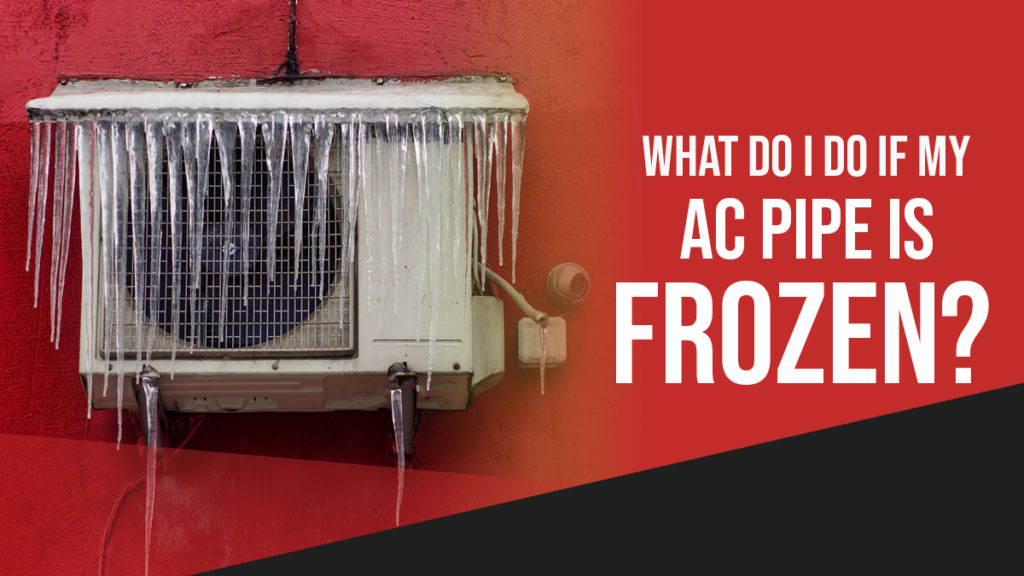What Do I Do If My AC Pipe Is Frozen?
When you have an air conditioner, you want it to work as efficiently as possible. But sometimes stuff happens that can cause your AC to stop working properly. For example, when pipes freeze in the wintertime and wind up restricting airflow through your house or apartment building, it can lead to some pretty serious problems. Luckily there are several things you can do if this happens so that your unit doesn’t become completely useless!
What can cause the pipe to freeze?
The most common cause of frozen AC pipes is a malfunctioning or poorly maintained AC system. If your air conditioner is on but not producing enough cold air to keep the house comfortable, you may have a frozen AC pipe.
The other potential causes include:
- Your indoor temperature is below freezing (below 32 degrees Fahrenheit), and you haven’t turned off any heating systems in the house yet.
- You’ve been running your air conditioner for an extended period without stopping it from letting it cool down first (this can happen if there isn’t enough clearance between two walls).
The most common reason your AC pipe froze is that it’s exposed to cold air. If the surrounding temperature is below freezing, water will freeze in an open line.
The second most common reason for a frozen AC line is that some other object has frozen on top of it and blocked airflow through the pipe. This can happen when someone places their hands or feet over a tube while sleeping or if there is ice buildup overnight on any object sitting near your unit (like a window ledge). In this case, all you need to do is remove those obstructions so that air can flow freely through your system again!

Turn off your AC.
If your AC pipe is frozen, you must turn off the power. This can be done in several ways:
- Shut off the main breaker in your home (or the wall).
- Turn off any circuit breakers feeding electricity into your home’s electrical system—for example, if you have an electric stove or other appliance with a fuse box.
- Unplug any extension cords from appliances and outlets that may have been plugged into the same outlet as your air conditioner or heat pump unit (if there is one).

Find the pipe.
If your air conditioner is not working, it may be frozen. If you have an older system and are worried about pipes freezing, check to see any signs of frost buildup anywhere in the unit.
If there’s no frost outside your AC unit, try shining a flashlight through the condenser fins and inside each pipe. You can also use a mirror to look around corners for any leaks or cracks in pipes that might be allowing moisture into them—this will help determine if this is actually happening with your specific situation (for example: does one or two sections seem exceptionally moist?). Finally, put on some warm clothes and grab some tools (like long sticks) in case you need them!

Turn on your water supply.
If your water supply is frozen, turn on the faucet and leave it running until the ice melts. It’s essential to keep this flowing so that it doesn’t cause damage to your pipes.
If you have a hose or sprinkler system attached to your AC pipe, make sure they are turned on. The heat from these devices will melt any remaining ice and prevent further damage from occurring in their vicinity.
If there is no way for you to turn on additional sources of heat (like electric baseboards), then consider putting an old towel under each faucet or valve opening where hot water can escape from entering into other parts of the home via cracks around windows or doors leading outside where temperatures may drop below freezing levels again later tonight during winter months when nights get colder than usual due too long periods without sunlight shining down upon us continuously day after day every single hour throughout our entire lives every single day always until death comes knocking at our door one day soon after which time we’ll finally be able.

Use a hair dryer to thaw it out.
The first thing to do is use a hair dryer to thaw the pipe. Place the dryer on high heat and hold it in one place for several minutes, moving around so that it warms up all areas of your AC unit. Once you’ve done this, use a lower setting on your hair dryer (if possible), as holding it still will cause damage over time.
If this does not work, you may need more drastic measures: call an electrician or get professional help from someone who knows what they’re doing!

Call a professional if you’re not comfortable fixing it yourself.
If you’re uncomfortable fixing your AC pipes, you should call a professional. They are trained and experienced in plumbing and can improve your frozen pipes faster than you can. You will also save money by hiring an expert instead of doing it yourself.
When calling for help with freezing pipes, ask what they recommend if they arrive on-site before they begin working on the problem (e.g., turning off all power sources). By asking these questions ahead of time, people who have been there know what needs to be done next—and how much each step takes—so that everyone feels confident about having confidence in their quality when problems arise later down the road!

Check your AC unit’s drain pan and condensate pump.
To check your unit’s drain pan and condensate pump, move the team to a location where you can access both. If it’s full of water (standard), empty it immediately.
If the drain pan is full and there’s no water coming out of the pump, this could indicate that something has frozen in place—likely at its base or along an internal pipe. And if so, thawing out these areas will help prevent future problems down the line!

Avoid any frozen areas on the air conditioner pipes.
It would be best to avoid frozen areas on the air conditioner pipes.
- Don’t use a propane torch to thaw the pipe. Propane is highly flammable and can cause a fire if it gets into contact with your home’s wiring, which can cause extensive damage to your house and belongings.
- Don’t use a heat gun to thaw the pipe, either. Heat guns are also dangerous because they contain toxic chemicals that could harm you or others in your home when misused (for example: leaving it on too long).
- Don’t boil water to melt ice outside an AC unit’s interior components; this process could damage internal components such as capacitors and transformers. Instead, call an experienced technician who knows how best practices work so they can safely remove any remaining buildup using specialized equipment specifically designed for this purpose!

Remove ice from the coils, fan, and fins.
You can also use a hair dryer to thaw the pipe. If you have one, using this method is best because it will be much more effective than any other tool. Place the hair dryer on low heat and turn it on for 15-20 minutes until all of the ice has melted.
If neither of these methods works, there is another option: using an electric heating source like a propane torch or heating gun (not recommended). These tools can be purchased at most hardware stores for less than $50, but they aren’t always available locally, so make sure that you check before buying one if possible!

Better, Stronger, Greater Pipes
If you have a frozen AC pipe, the first thing to do is try to thaw it. If your air conditioner has been running and there is ice on its exterior, it may be melted with a hair dryer or hairdryer. Make sure that you turn off the air conditioner before beginning this process so as not to cause damage from steam or hot water being released into your home.
Once this step has been completed and all of the water is drained out of your system, follow these steps:
- Please turn off all utilities (water supply and electricity) by turning off switches at each location connected to service lines leading into your house; for example, faucets in bathrooms or kitchens; thermostats in bedrooms; thermostats outside garages; etc.
- Wait until all appliances are turned off before turning them back on again (or wait until someone who knows how can turn them back on).
In the end, it all comes down to proper maintenance. If you’re diligent about keeping your AC unit clean and running smoothly, then you should be able to avoid any issues with pipe freezes!







